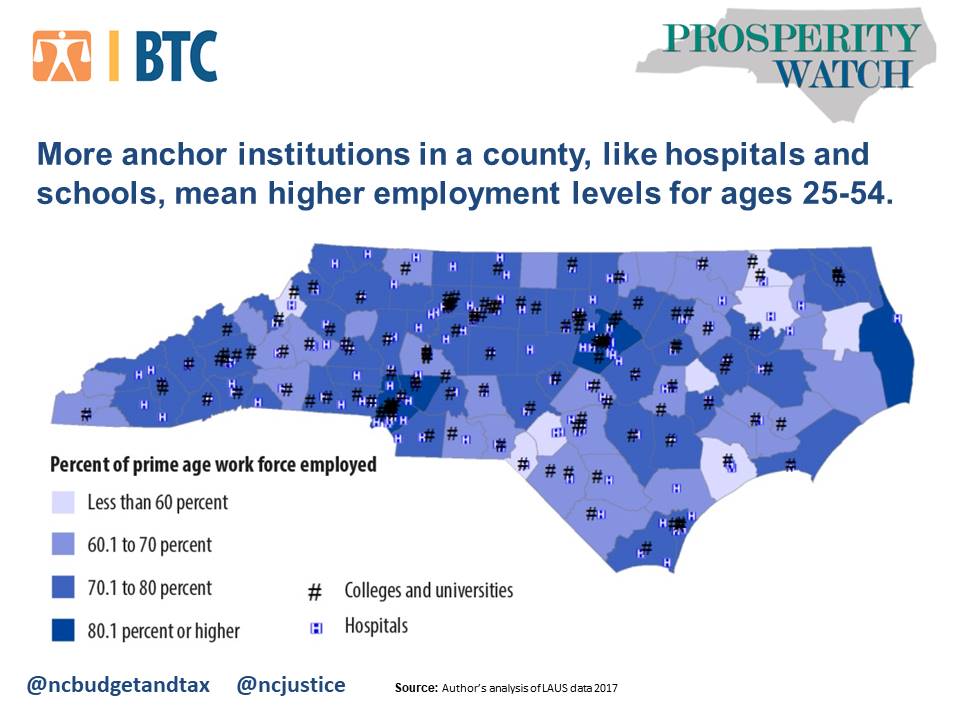Prosperity Watch, Issue 92, No. 1
Sept. 5, 2018
In the recently released State of Working North Carolina report this year, anchor institutions are identified as key tools in the state’s goals to create good, paying jobs, build wealth and support broader community well-being.
These institutions are most often thought of as universities, community colleges, and hospitals, which are able to drive opportunities to their communities and the broader region through their resources and own employment and contracting practices.
Preliminary analysis of just the presence of anchor institutions in North Carolina communities suggests a positive relationship with broader employment levels for the prime-age workforce. That is, the more anchor institutions there are in a county, the higher the employment level is of the prime-age workforce aged 25 to 54. In rural communities with no anchor institutions, employment levels are a full 5 percentage points below employment levels in communities that have at least one anchor institution.

Beyond employment, the presence of both institutions of post-secondary education and hospitals is correlated with higher educational attainment. As a key marker that economic developers look to in assessing communities for their ability to thrive, this connection is an important one, which, if leveraged, can further generate economic benefit for existing residents.
To strengthen these findings for North Carolina workers, a focus on increasing the quality of jobs, connecting to supply chains through the region and adopting local hiring practices could further serve to enhance the employment outcomes and economic benefits of anchor institutions in the state.
 Justice Circle
Justice Circle